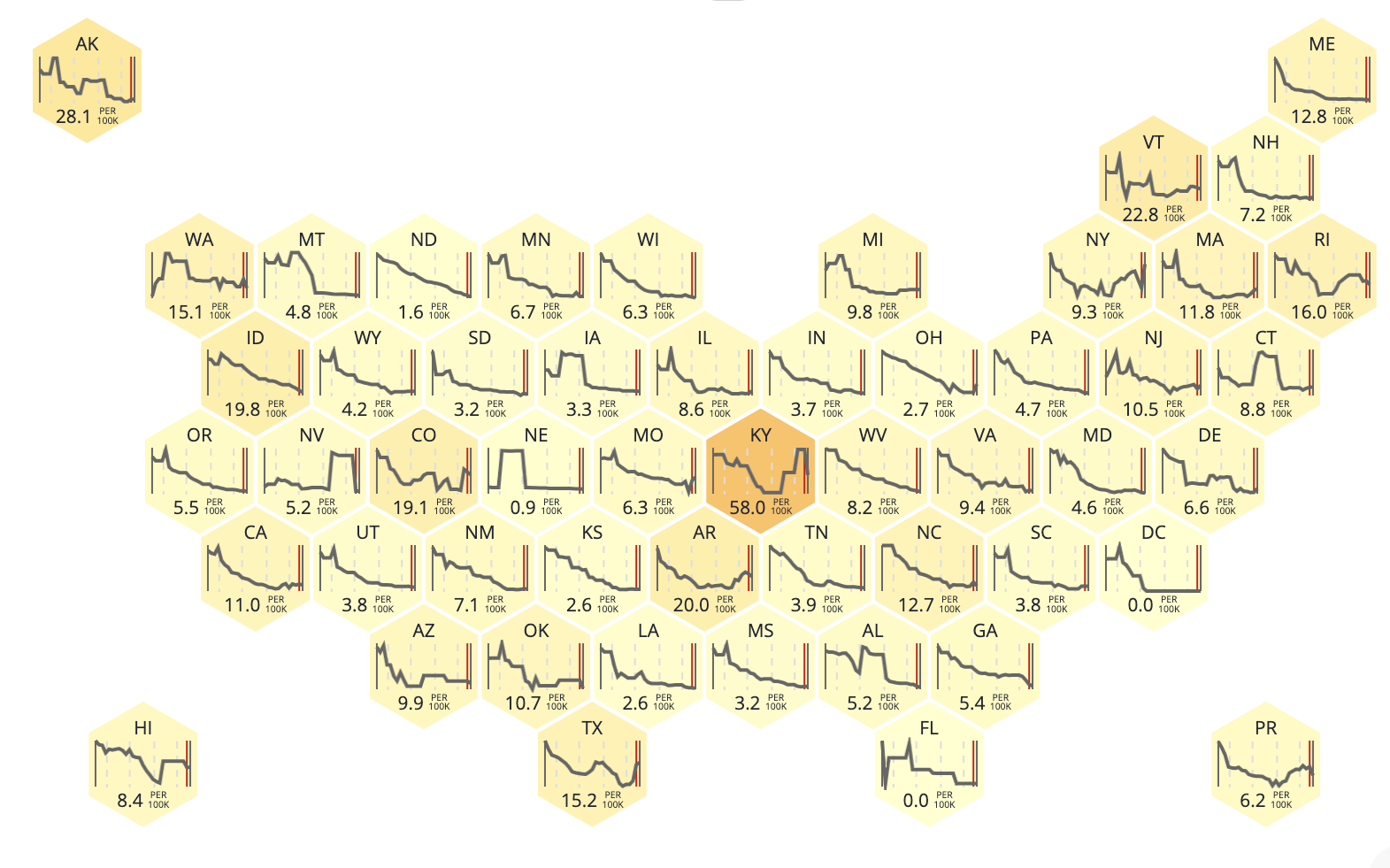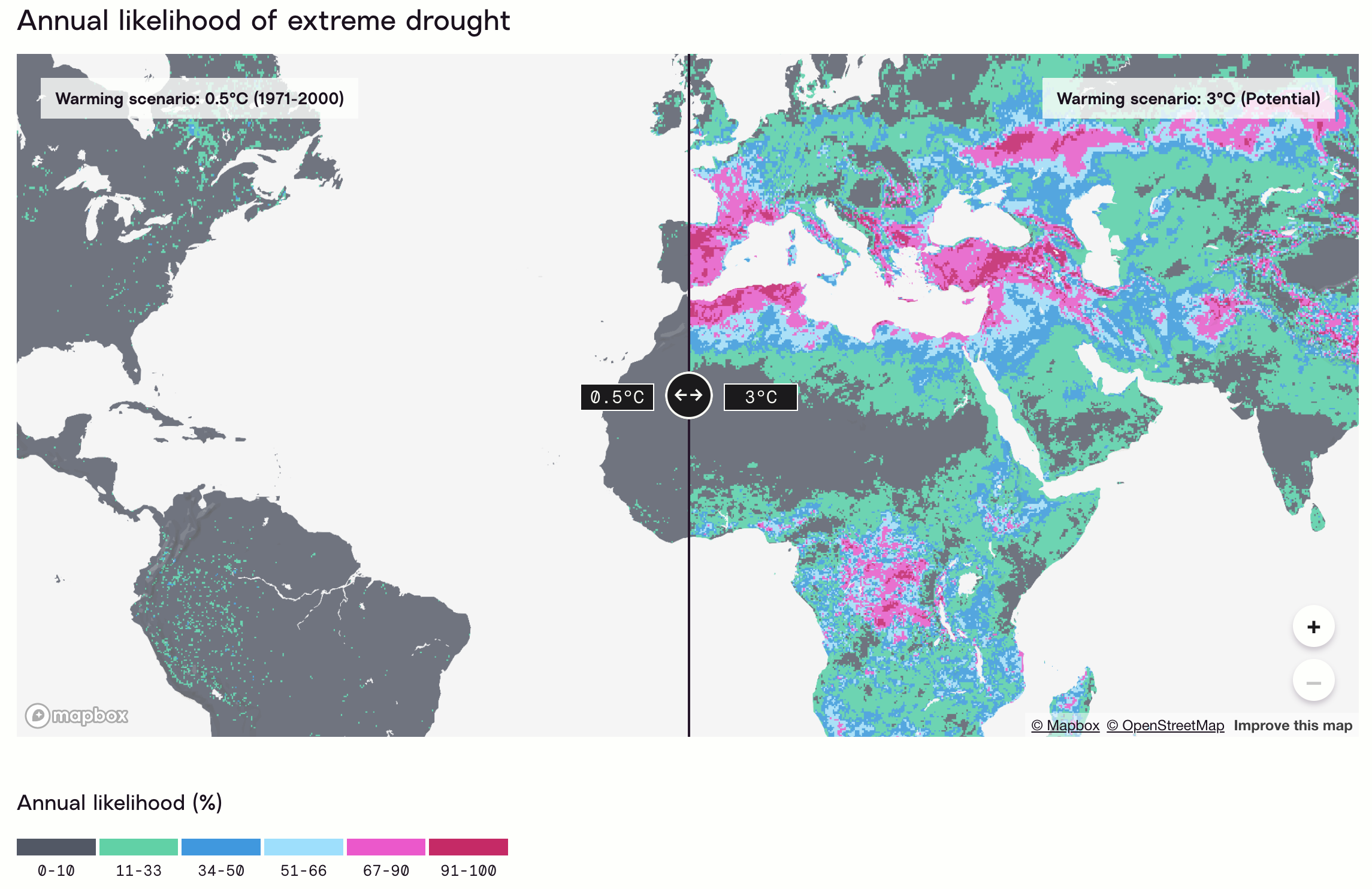“data/AI maturity” and “data/AI strategy” are used fairly interchangeably in this document, as we treat both to mean “the intentional use of data and computing within your organization to accomplish something.” Call that a strategy, a measure of your maturity, or something else — we consider it all part of your approach in using data and technology to achieve your mission.
Glossary Note
So you want to become “data-driven”, “AI-enabled”, and otherwise supercharged with the latest and greatest data innovations?
Well, then you’ve come to the right place! In this article, we’re introducing some strategies for becoming data-driven in the ways that you want and need to be. There are a lot of great resources for expanding your data maturity and using AI better as a nonprofit. We hope this article adds to that work by focusing on specialized capabilities that you can develop based on the factors critical to the success of your organization.
What This Guide Covers
This guide highlights five data capabilities that social organizations may want to develop. Instead of simply talking about data maturity as one dimension from low to high, we hope to introduce a few different areas that might be more or less important for you to increase your data capabilities in. We’ll discuss the five data capabilities and, for each one, describe what that means for your abilities, infrastructure, talent, and ethical considerations.
What This Guide Doesn’t Cover
The data capabilities we’re talking about in this article relate largely to programmatic functions, i.e., the activities and services that you as a social organization use to achieve your mission. There are many other uses of data within a social organization that we will not be talking about here, prime among them measurement and evaluation and core operations. We chose to focus on using data and computing to deliver programs because those are the areas that have the most promise for data science, machine learning, or AI. While social organizations may be excited by the data and AI age and may want to use data all across their activities, the new data technologies that gave rise to Silicon Valley and transformed our daily lives are narrowly focused on efficiencies. While the abundance of collected data may help inform some new strategic directions or theories of change, measurement and evaluation to test one’s impact is largely the same as it was 30 years ago. Therefore, we suggest any organizations looking to use data and statistics to measure their impact or prove their theories of change look to that established field. On the operations side, there are opportunities for data and computing to help, but those functions are so similar across nonprofits that we feel the guides on using data science for operations, like fundraising and communications, are broadly applicable to most organizations. For those reasons, we felt the new value would be found in talking about the different ways data can be used toward mission.
Five Data Capabilities
Here we break down the five main types of data capabilities you might want to add based on the type or social organization you are. The trick is to start from the core function that you most rely on to deliver your social organization’s impact, and then assess how data and computing could help you do it better.

Digital Service Delivery
What Is It? Digital service delivery refers to social organizations who are using software or digital services as their main form of intervention. Perhaps you provide online tutoring, so all interactions with constituents are through your platform, or perhaps you provide guidance to people over text. If this is a core function of your organization, you have a huge opportunity to use data for learning and optimization in the ways that many for-profit tech companies do. On the learning front, understanding how your users interact with your service is a straightforward task, as now almost every interaction they have is digitized and turned into data as part of their journey. On the optimization front, the fact you’re using software means you have incredible control over where you use computers to speed up your process, as computers are already delivering the bulk of your service. Speeding them up is a matter of upgrading your code.
Who Uses It? This type of data capability is largely seen in direct service organizations that operate digitally or nonprofits who create data-driven software to deliver their services. Examples include Watsi, Medic Mobile, and DonorsChoose.
What Type of Data Talent Do I Need? Software engineers, data architects, data scientists, machine learning, human-centered design.
What Data Infrastructure Do I Need? Likely in-house, as you’ll be collecting a lot of data from your live system. This could require data architects and data engineers.
What Other Design Decisions Should I Consider?
- Get extremely clear about what tradeoffs you make when you run your intervention as a human before you run it through software. In this author’s opinion, the vast majority of harms that occur from data and AI in the social sector occur because people cede control of those decisions to the tech, as if it is faultless, and fail to engage end users in the design.
- As you’ll be collecting data about your users, get clear up front on informed consent. Working with your constituents to discuss tradeoffs of collecting more or less data and understanding what they are comfortable or uncomfortable with will go a long way to building a robust tool that supports the people you serve.
- Of the five data capabilities, this one benefits the most from the new data science and AI age. You have many resources to borrow from when it comes to using data science, machine learning, and other advanced computing techniques in your work.

Non-Digital Service Delivery
Often critical for direct service organizations
What Is It? This data capability is primarily used by organizations who deliver a direct service, but deliver it face to face, as opposed to primarily in a digital context. This service could encompass a wide variety of different constituents and activities, e.g., giving food to people through a food bank, providing financial education training, or raising funds for individuals’ healthcare. Despite the variety of these services, the organizations delivering them have a common set of needs – marketing the service to new constituents, and running a set template of activities to deliver the intervention to the constituents. These areas are where data and computing can supercharge your work.
In terms of marketing the service, if you’re not reaching as many people as you want to, you may want to build some data capabilities in learning about your marketing operations. Questions like “is person X likely to need my services?” and “how do I approach person X to increase the odds they’ll enroll?” are questions that are good candidates for data-driven modeling and statistical testing. If your pipeline is full but it’s time-intensive to run recruitment, or recruitment requires a high level of customization to succeed, then some computing skills to automate that process in a data-driven way could be helpful.
When it comes to delivering your service, you no doubt have many opportunities to use data to learn about the optimal design. Questions like “what activity do I have to take to ensure person X succeeds during my intervention?” and “what is the ideal dosage of my intervention to have the effect I want?” are common questions that will require data to answer, for any suitably complex service. For any given process you’ve designed, there are likely to be many opportunities for data-driven optimization. Repetitive tasks, like intake, check-ins, or customized curriculum design can potentially be handled by data-driven algorithms. Data models that allow you to predict future conditions, like a shortage of a resource that you need to run your intervention, can also help your staff anticipate and react to incoming conditions to save time, save money, or increase the impact of your intervention.
If one of your critical functions is delivering a service to constituents, you may want to invest in the capability to test and improve your service design or the capability to speed up your efficiency in delivering it at scale.
Who Uses It? Organizations who provide direct services that are able to use data and computers to speed up or scale a portion of their programmatic operations.
What Type of Data Talent Do I Need? People with data collection and analysis skills, data analysts or data scientists who can run experiments. Software and algorithm creation can likely be tapped on an as-needed basis through trusted consultants.
What Data Infrastructure Do I Need? This will depend on the scale of your program operations that can be supported with data. Many organizations in this category do quite well with off-the-shelf infrastructure.
What Other Design Decisions Should I Consider?
- The biggest benefits you’ll see from using data will come from collecting data about your programs so you can learn how they’re working and redesign them, or from using computers and data to speed up menial tasks for your programs staff.
- While your direct impact on constituents with your data tools may be further removed from the case of Digital Service Delivery, the ethical considerations are no less important. Make time to design thoughtfully with your community. You can read about tips for doing that in a recent data.org + RECoDE report here.

Knowledge Creation
Often deployed by research and advocacy organizations
What Is It? Organizations that have a strong research component rely on creating and disseminating new knowledge to the world, so others can act more effectively. These organizations use data and computing to gather data and learn from it, which will then be delivered in the form of research papers or articles. Outside of potentially using computers to help scrape and collect external datasets, there are very few options for optimization within a research capability. Research requires a lot of human elements, despite its technical nature. Humans are required to drive the aims of the experimentation, use intuition and context, and conduct qualitative research. Therefore the majority of your data and technology skills will be devoted to statistical modeling and research skills.

Who Uses It? Organizations whose theory of change depends on delivering unbiased research to the world for others to use. Examples include Pew Research Center, ProPublica, and organizations that created models related to COVID-19, like Carnegie Mellon’s COVIDCast.
What Type of Data Talent Do I Need? Research analysts, statisticians, economists, demographers, data scientists.
What Data Infrastructure Do I Need? Enough to capture survey results and experimental data, which is often supported well by off-the-shelf cloud services or in-house computers.
What Other Design Decisions Should I Consider?
- Creating research for others to use can be a contentious task, as the onus is on you to be rigorous and objective.
- People often want to interpret research as “true” and infallible and may thus use your results to argue for whatever viewpoint they like. You can greatly improve the outcomes of those using your findings by making very clear what assumptions you made, how the work should be interpreted and, most importantly, what cannot be concluded from it.
- There are many unintentional ways to do harm with research. It is best to ensure you and your staff are versed in these potential missteps so you can work to mitigate them.
- As a researcher, you in some sense speak for the group that you study. Aside from merely getting consent for data collection, understanding the human context behind your study is critical for representing your constituents well.

Community Management
What Is It? Many groups depend heavily on their communities to do their work. Whether an advocacy group organizing people to take action, an affiliate community offering its members updates, or a nonprofit that deploys volunteers in its work, member-based organizations will want to optimize their programs for recruiting, maintaining, and activating their members.
Having the data skills on staff to learn about your members and tailor your services to them will be important. You’ll want to answer questions using data like “what service/offering will this member most want from me?” or “what action do I have to take to get this member to do X?”. You will also likely want to take advantage of ways to increase your program efficiency with computing. Some time-consuming activities include sending out customized calls to action and interacting with members for customer service. These can be automated with tools like data-driven mailers and chatbots, for example.
If you rely on your member base as a critical part of your intervention, consider building up some data skills in these areas.
Who Uses It? Groups that rely on members, particularly large numbers of volunteers, often have robust member management systems. Political campaigns, for example, have some of the most active data initiatives devoted to recruiting, organizing, and deploying members. Professional associations also use this capability, like ASTHO, an organization that coordinates and supports state health departments and epidemiologists.
What Type of Data Talent Do I Need? Data analysts to interpret any results or carry out any studies you need.
What Data Infrastructure Do I Need? The tools you’re likely to use are off-the-shelf (e.g. Salesforce, NationBuilder). They tend to come with their own infrastructure built in, so you’re likely to be supported by whatever software you invest in.
What Other Design Decisions Should I Consider?
- When storing even benign information about your members, you’ll want to invest in security and privacy methods that protect them.
- Many successful organizations employ a “data minimization” principle, collecting only the information they’ll need for analysis, so as not to increase the risk of excess information being leaked.
- In some contexts, there are real life-and-death risks to data collection (e.g., if your members are activists trying to throw over an autocracy). Those contexts require sensitivity beyond the expertise of this guide. Make sure to describe risk-rewards for each data point to assess the true risk vs. perceived risk.

Persuasion
What Is It? We don’t often want to talk about this use of data, but persuading people to believe what you believe or to do what you want is a very valid use of your data capabilities. It may feel uncomfortable to say that, because we believe that data is “true”, and “objective”, and therefore using it for a personal agenda corrupts the very nature of using data. However, a look at any debate about vaccinations, climate change, or politics will quickly demonstrate that data is often used rhetorically to bolster one’s point. The motives for doing so need not be sinister, but could instead be that an organization simply wants to bring awareness to, say, community violence, by showing the data behind their concerns. Whatever the intent, the aim is to deploy data to change another person’s mind to believe something you want them to believe, or to motivate them to do something you want them to do.

Who Uses It? Advocacy groups often use this application of data to persuade others to care about their mission. The ACLU’s graphics lab, The Truth’s facts section, and Probable Futures.
What Type of Data Talent Do I Need? If you’re creating research to advocate with yourself, see the Knowledge Creation capability above. More likely than not, however, it may be more important to have data visualization and data communication skills than rigorous statistical analysis skills.
What Data Infrastructure Do I Need? You’re likely collecting data from other sources to study or create graphics around, so you won’t need much in the way of advanced data systems. Investing in the tools and resources to create compelling visualizations will be most important.
What Other Design Decisions Should I Consider?
- Though this may sound controversial, the Knowledge Creation capability’s goal is to say things that are as rigorously mathematically correct as possible, while the Persuasion capability’s goal is to not say anything that’s certifiably false. Be aware that this capability is intentionally designed to present just the information you need to change someone’s mind, and own that that’s the use of this capability.
- Many social advocates are wary of any process that quantifies their work. This is a very natural reaction to have, but can oftentimes be softened by using the following tactics:
- Describe the ways data supports the human-centered work the advocates already do.
- Demonstrate prototypes of data solutions to leadership and program leaders that make their lives easier or their work more apparent
- Reassure that the data and uses thereof are in their control. This is not going to be used to punish them.
- Interpreting data visualizations is a delicate act. Make sure you’re versed in resources on best practices, like the Guide to Data Visualization from the Resource Library, Data Viz Reader’s Chapter on Ethics and How To Lie With Statistics.

Conclusion
And there you have it! Those are the key uses of data and computing that can dramatically change the way your organization works.
We hope this article has given you a nuanced perspective of the data capabilities you may want to strengthen. At a high level, ask yourself which components of your organization you have nailed down (Do you still need to prove your Theory of Change? Or are you at a stage where you want to speed up your programs?) Remember that the hype and excitement about the Big Data / AI / Fourth Industrial Revolution / Robot Age is really about algorithms for creating efficiencies, so don’t get too lost trying to use these tools outside of your programs. If you’re at a stage where you want to boost your programs with data and computing, or you’re just interested in which capabilities you might grow when you get there, then we hope the five programmatic capabilities have given you a taste of the different skills you might want to acquire and the considerations you’ll have to think through. Most of all, we hope this helps you take steps forward in your organization’s data and computing journey. You’re doing important work and we want you to do it the best way you can! Onward and upward!
About the Author
Jake Porway loves seeing the good values in bad data. As a frustrated corporate data scientist, Porway co-founded DataKind, a nonprofit that harnesses the power of Data Science and AI in the service of humanity by providing pro bono data science services to mission-driven organizations.
Read moredata.org In Your Inbox
Do you like this post?
Sign up for our newsletter and we’ll send you more content like this every month.
By submitting your information and clicking “Submit”, you agree to the data.org Privacy Policy and Terms and Conditions, and to receive email communications from data.org.
